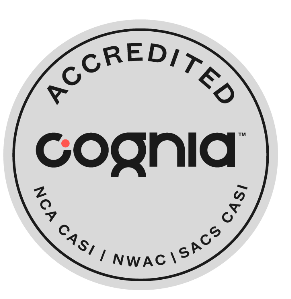POLICY NUMBER:
300.08
ADOPTED:
12.1.2015
Board Policy
- The Board of Education is committed to providing equal access to all services, activities, and programs it offers. Students, employees or members of the public will not be denied access to services, programs, or activities due to their legitimate use of service animal in accordance with federal and state law.
- The Board of Education authorizes the Superintendent and District Administration to develop administrative regulations consistent with this policy.
ADMINISTRATIVE REGULATION:
300.08-1
APPROVED:
12.1.2015
Definitions - 300.08-1
For purposes of this policy, the following definitions apply:
- “Direct Threat”: A significant risk to health and safety of others that cannot be eliminated by a modification to policies, practices, or procedures, or by the provision of auxiliary aids or services.
- “Disability”: means, with respect to an individual— (A) a physical or mental impairment that substantially limits one or more major life activities of such individual; (B) a record of such an impairment; or (C) being regarded as having such an impairment (42 U.S.C.§12102 of the Americans with Disabilities Act).
- “Service Animal”: Any dog that has been individually trained to do work or perform tasks for the benefit of an individual with a disability. Other species of animals, whether wild or domestic, trained or untrained, are not service animals for the purpose of this definition. The work or tasks performed by a service animal must be directly related to the individual’s disability. The provision of emotional support, well-being, comfort, or companionship does not constitute work or tasks for the purposes of this definition.
ADMINISTRATIVE REGULATION:
300.08-2
APPROVED:
12.1.2015
General Provisions - 300.08-2
- Individuals with disabilities shall be permitted to be accompanied by their service animal or service animals in training in all areas of District facilities where members of the public, participants in services, programs or activities, or invitees are allowed to go.
- As provided for in Utah law, service animals in training shall be granted access to District facilities where members of the public, participants in services, programs or activities, or invitees are allowed to go.
ADMINISTRATIVE REGULATION:
300.08-3
APPROVED:
12.1.2015
Service Animal Inquiries - 300.08-3
- In situations where it is not obvious that the dog is a service animal, District or school staff may only ask two questions: (1) is the dog a service animal required because of a disability; and (2) what work or task has the dog been trained to perform.
- A service animal’s owner may be required to provide documentation indicating that the service animal has been licensed in the jurisdiction (s) in which the owner resides.
ADMINISTRATIVE REGULATION:
300.08-4
APPROVED:
12.1.2015
Service Animal Removal - 300.08-4
- Removal of a service animal: A District or school administrator may request an individual with a disability remove a service animal from its facilities under the following circumstances:
- The animal is out of control and the animal’s handler does not take effective action to control it; or
- The animal is not housebroken; or
- The animal poses a direct threat.
ADMINISTRATIVE REGULATION:
300.08-5
APPROVED:
12.1.2015
Service Animal Responsibility - 300.08-5
- A service animal shall have a harness, leash, or other tether, unless either the handler is unable because of a disability to use a harness, leash, or other tether, or the use of a harness, leash, or other tether would interfere with the service animal’s safe, effective performance of work or tasks, in which case the service animal must be otherwise under the handler’s control (e.g., voice control, signals, or other effective means).
- The District and its employees are not responsible for the care or supervision of a service animal, unless documentation exists specifically requiring such care and supervision by the District or its employees.
Exhibits
None
Forms
None
Document History
Adopted – 12.1.2015.
This online presentation is an electronic representation of the Canyons School District’s currently adopted policy manual. It does not reflect updating activities in progress. The official, authoritative manual is available for inspection in the office of the Superintendent located at 9361 South 300 East Sandy, UT 84070.


